
© Stephanie Berger. (Click image for larger version)
Shen Wei Dance Arts
Neither
★★✰✰✰
New York, Brooklyn Academy of Music
6 October 2016
www.shenweidancearts.org
www.bam.org
Nor
Halfway through Shen Wei’s Neither, at the Brooklyn Academy of Music last week, I remembered: I’d heard that music before. It was in 2011, during New York City Opera’s last season, in an evening called “Monodramas.” The last installment of the evening was an hour-long piece for orchestra and soprano, singing at the very top of her range so that the words were unintelligible. The accompaniment consisted of a spectral cloud of thick, drone-like chords. I confess I didn’t make it to the end.
Neither is an opera, sometimes referred to as an “anti-opera,” composed by Morton Feldman in 1976-77, with a libretto by Samuel Beckett. Both Feldman and Beckett claimed to dislike opera, but went ahead with the project all the same. The resulting work, which eschews development or drama or, or the most part, inflection, is, unsurprisingly, lacking in dramatic tension. The text, a sixteen-line poem by Beckett, suggests absence and the slipperiness of reality, with references to the “impenetrable self” and the “impenetrable unself,” the sound of footfalls that becomes “no sound,” and, beyond the known world, an “unspeakable home.” All very poetic and mysterious, but only if you have supertitles to clarify what is being said – mostly what one hears is a series of vowels without consonants.
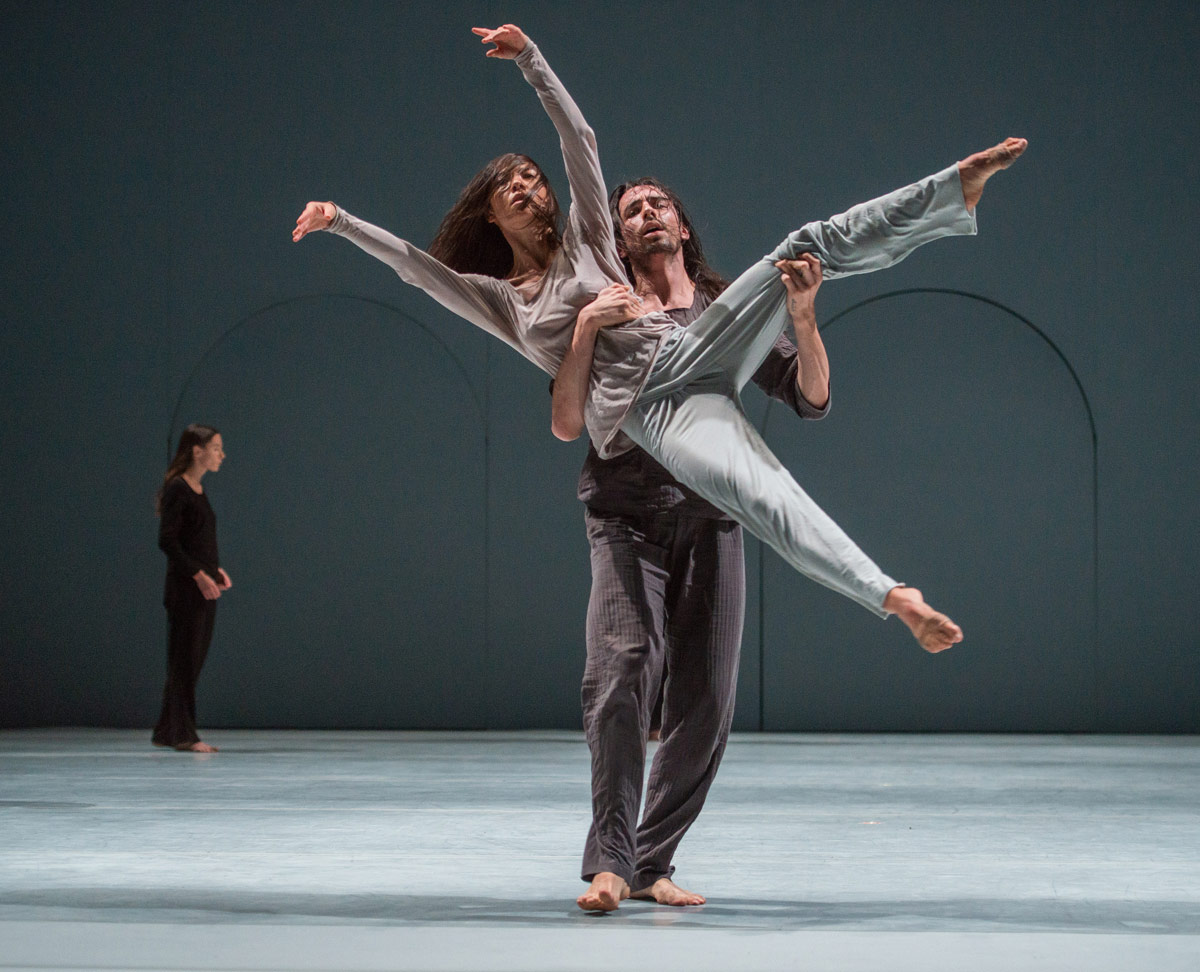
© Stephanie Berger. (Click image for larger version)
The choreographer Shen Wei, undaunted, has added a third element: dance. (At BAM, a recording by Synphonieorchester des Bayerischen Rundfunks, sung by Petra Hoffmann, was used.) To his credit, it must be said that there is enough visual stimulus in his version to sustain one’s interest for the hour-long duration of the work. Just barely. Shen, a minimalist with a penchant for stark, surrealist landscapes, creates a kind of liminal space for the dancers to inhabit, an antechamber surrounded by three white walls lined with arched doorways. The dancers hover there, moving with exquisite slowness, spiraling to the ground and rising up again, walking, alone or in groups, like souls trapped in limbo.
A man, and then a woman, writhe on the floor for what seems like an eternity. Then, another woman, encased in a giant gleaming chrysalis of plastic, enters, through a light-filled doorway. She stays for a while, and then is carried up a ladder on another dancer’s back. The effect is mesmerizing, like a moth floating up into the night sky. When she reaches the top, a naked man appears above her. The imagery seems quasi-religious. But then the moment passes, without much fanfare.
Soon, more plastic-encased figures emerge, leaving their carapaces behind on the floor as they fold and unfold, like moulting amoebas. Other dancers come together, joining arms to form complex organisms, pivoting, bending, moving backwards. But, as in Feldman’s music, nothing leads to anything else. Ideas float around, and then dissolve. The effect of Shen’s Neither, like that of the original, is decidedly muted.









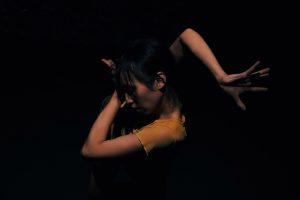


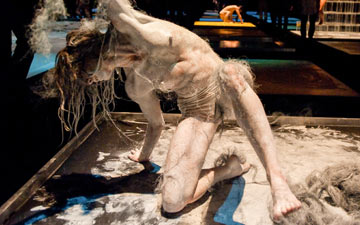
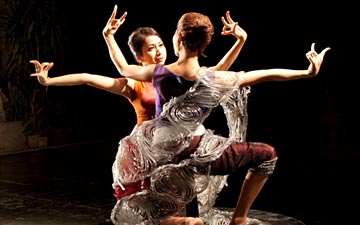
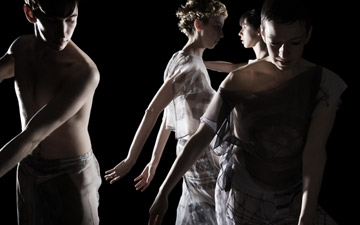

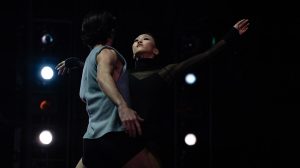
You must be logged in to post a comment.